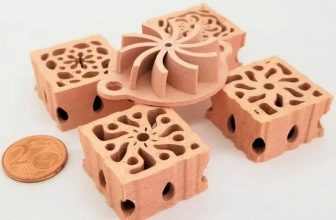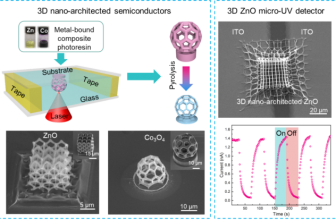“Nihon Keizai Shimbun” published an article “Using 3D printing technology to build a house in 10 days” on August 13, authored by Shuhei Ochiai and Naoki Watanabe.
The full text is excerpted as follows:
A single-family house can be built in just 10 days. This technology is the 3D printing that a start-up in the United States began to use in the field of residential construction last year.
3D printing technology, which used to process resin and metal in the past, has been continuously developed, and now it can be used to print human organs and artificial meat.
People look forward to using this technology to produce goods without manpower in the short term and bring more technological innovations.
Print building
Somewhere in the desert area of California, the construction plan to “print” 15 houses within 2021 is about to start.
The company implementing the plan is the American construction start-up “Magnificent Construction” company.
The company’s business model is to manufacture 3D printed housing in its own factory, and then use large trucks to transport it to the site for installation.
To perform 3D printing, you need to enter the drawing data in advance. According to the data, the jet tube is driven, and the special building materials that harden immediately after being irradiated by ultraviolet rays are jetted out layer by layer.
For example, to build a ceiling, after placing the pillars and slabs, it can be completed by spraying building materials from above.
What needs to be fixed is only structures such as the exterior wall and floor, so there is no need for large-scale on-site construction.
If it is a small house for one person’s life, it is said that it only takes 10 days from manufacturing to installation.
According to the introduction of a large domestic housing company, it usually takes about 2 months to complete an ordinary single-family building.
The CEO of “Magnificent Construction” said confidently: “It can save 30% of the cost compared with traditional construction projects.”
The company began supplying 3D printed houses in California last year and has begun discussions about entering the Japanese market.
There are more and more 3D printed buildings in the world.
CyBe Construction, a Dutch 3D printing construction company, has achieved outstanding results and has provided 10 mobile concrete 3D printers to the world.
Print parts
Large domestic companies are also taking action. The Dalin Group Construction Company trial-produced a 3D printed bench 2.5 meters high and 7 meters wide.
If the progress is rapid, 3D printing products are expected to be put into commercial use in 2022.
Takenaka Industrial Store is also jointly verifying 3D printing technology with Dutch start-ups, and plans to use it to build event facilities after 2023. Previously, the areas where companies used 3D printing technology were mainly resin and metal molding. Compared with traditional techniques such as metal mold forming, 3D printing can complete related work in a shorter time.
It is suitable for small-scale and multi-variety production, so it is often used to produce trial products.
Other advantages of 3D printing include a higher degree of freedom in product style design and the ability to reduce construction personnel.
Mitsubishi Heavy Industries will use 3D printing technology in the processing procedures of H3 domestic rocket engine nozzle parts,
Strive to reduce launch costs-reportedly as high as 10 billion yen (approximately US$91 million)-in half.
Data research company Fuji Economic Research said that by 2025, the scale of the global 3D printing market using resin and metal as raw materials
It will increase from 118.6 billion yen in 2019 to 183.3 billion yen, an increase of more than 50%.
Print organs
Deloitte’s Yosuke Irue pointed out that “recently, the technology has continued to advance, and the number of materials that can be processed with 3D printing technology has increased, and the printing speed has also been increasing.”
3D printing is not only a simple alternative means of manufacturing items, but also plays a role in promoting technological innovation, such as in the field of regenerative medicine.
A Japanese medical start-up company independently developed a 3D printer,
Cells can be collected from a patient for culture, and then an organ specially used on the patient can be made.
The company hopes to use this technology in organ transplant operations by 2025.
Since this organ is made of patient’s cells, compared with artificial organs, patients have a lower risk of infection and rejection after transplantation.
The company will first conduct clinical trials around blood vessels and cartilage.
The company’s Masahiro Sanjo said: “To manufacture transplantable organs, 3D printing technology is indispensable.”
Print food
In the food industry, Redefine Meat, an Israeli company, has developed a technology to use 3D printed artificial meat to make vegetarian steaks.
This kind of artificial meat is manufactured by spraying plant raw materials layer by layer through a printer nozzle.
The company intends to provide hamburgers and other products to the Asian market in 2022.
3D printing can play its strengths in the manufacture of special-purpose items, such as designing complex items, organs made from cell culture, and so on.
However, in terms of mass production, the way of metal mold forming is often more appropriate.
How to find the areas where 3D printing is good at and apply them is the key to distinguish between high and low.
If the 3D printing technology that can produce items in a short time without the use of labor is widely used,
The long-term shortage of manpower in the Japanese industry is expected to be alleviated.
Especially in the construction industry, on the one hand, the problem of aging personnel has become more and more serious;
On the other hand, young people do not want to enter because they hate hard, dirty and dangerous work.
According to the forecast data released by labor policy research and training institutions in 2019,
In 2040, the number of employees in the mining and construction industry will decrease from 4.93 million in 2017 to less than 3 million.
Commissioned processing
The construction industry, suffering from a shortage of manpower, has successively introduced robots in recent years to complete material processing and construction work.
In this case, if the 3D printing technology that can automatically build the entire house is used, it is possible to go further.
Expert Iwasaki Taku also pointed out that “in order to maintain competitiveness, it is necessary for domestic industries to focus on the areas where 3D printing technology can be used and implement structural changes.”
However, there are also some issues. Taking into account the frequent occurrence of disasters and other factors, the Japanese construction industry has issued strict regulations.
It is actually very difficult to use 3D printing technology to build houses on a large scale.
The main materials used to construct houses, such as pillars, cannot be used if they do not comply with Japanese Industrial Standards and other regulations, and must be separately certified.
Irie Yosuke believes that “Japanese companies have high requirements for product quality, and mass production will encounter resistance.”
In Europe, commissioned processing services related to 3D printing are becoming popular, but in “self-contained” Japan, the same services are less, which has become an obstacle to the popularization of 3D printing.





